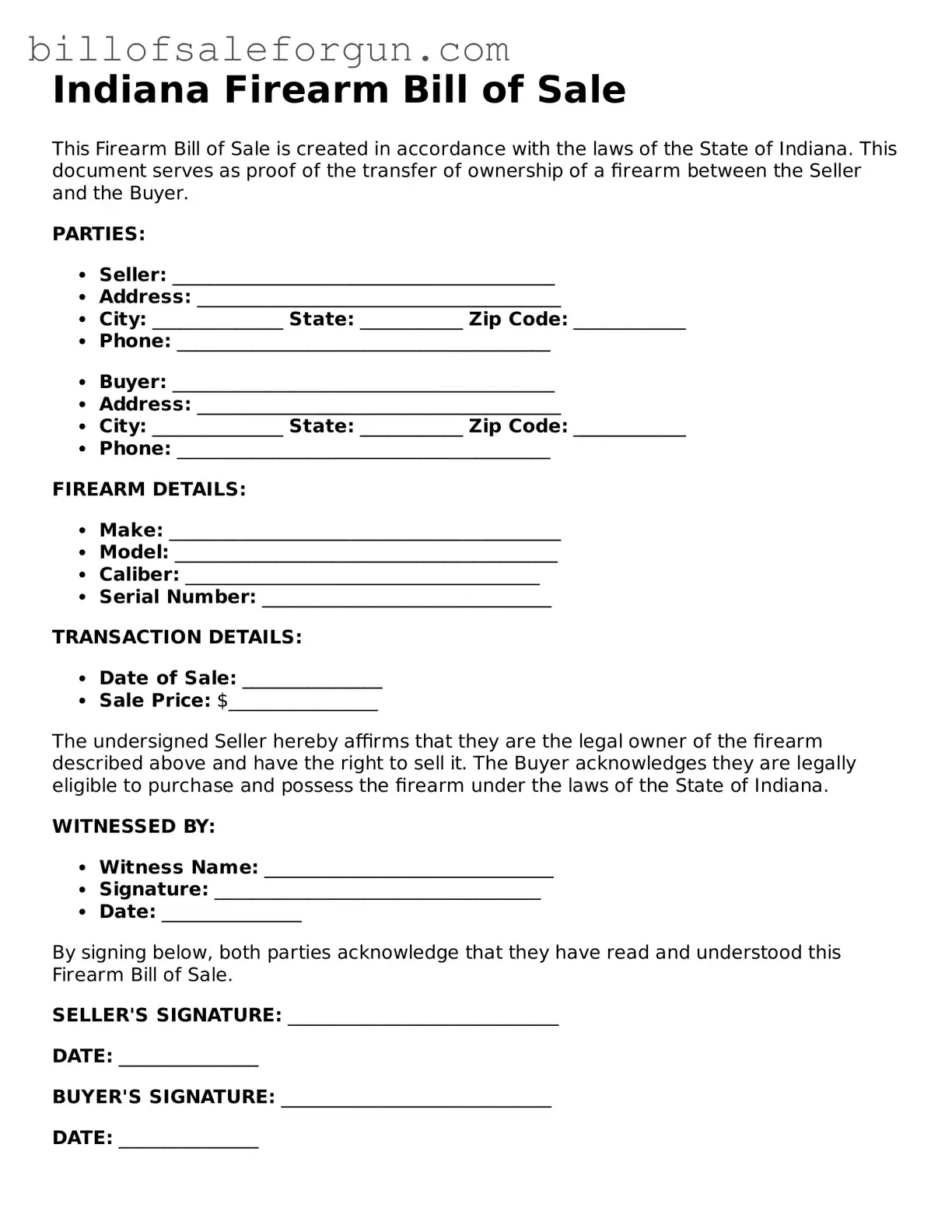Similar forms
The Indiana Firearm Bill of Sale form shares similarities with a Vehicle Bill of Sale. Both documents serve as legal proof of a transaction between a buyer and a seller. They typically include essential details such as the names and addresses of the parties involved, a description of the item being sold, and the sale price. Just as a Vehicle Bill of Sale is often used to transfer ownership of a car, the Firearm Bill of Sale facilitates the transfer of firearm ownership, ensuring that both parties have a record of the transaction.
Another document that resembles the Indiana Firearm Bill of Sale is the Personal Property Bill of Sale. This form is used for the sale of various types of personal property, not just firearms. Like the Firearm Bill of Sale, it includes the names of the buyer and seller, a description of the item, and the sale price. Both documents protect the rights of the buyer and seller by providing a written record of the transaction, which can be useful in case of disputes.
The Rental Agreement also has some parallels with the Indiana Firearm Bill of Sale. While a Rental Agreement typically outlines the terms of renting a property or item, it similarly establishes a legal relationship between two parties. Both documents require clear identification of the parties involved and the specifics of the item or property. In both cases, the documentation helps to clarify the terms of the agreement, ensuring that both parties understand their rights and responsibilities.
The Lease Agreement is another document that shares characteristics with the Indiana Firearm Bill of Sale. While a Lease Agreement pertains to the temporary use of property, it also requires detailed information about the parties and the property involved. Both agreements are legally binding and require signatures from both parties. They serve to protect the interests of the parties by documenting the terms of the arrangement, whether it is a sale or a lease.
A Sales Receipt is also similar to the Indiana Firearm Bill of Sale. Both documents provide evidence of a transaction. A Sales Receipt typically includes the date of purchase, item description, and price, while the Firearm Bill of Sale includes similar information but is specific to firearms. Both serve as proof of ownership and can be used for warranty claims or returns, thereby offering protection to the buyer.
Finally, the Warranty Deed has similarities with the Indiana Firearm Bill of Sale in that both documents are used to transfer ownership. A Warranty Deed is specific to real estate transactions, providing a guarantee that the seller holds clear title to the property. In contrast, the Firearm Bill of Sale ensures that the seller has the right to sell the firearm. Both documents are critical in establishing legal ownership and protecting the interests of the parties involved in the transaction.
